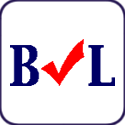Organizations Retain Strong Embrace of Recognition Products
AccuList’s recognition and incentive products marketing clients will be happy to know that the market is strong and stable, per the most recent data. A 2019 survey of employee recognition programs, conducted by rewards association WorldatWork and underwritten by Maritz Motivation, found the programs overwhelmingly common (87%) among organizations surveyed, typically companywide (88%), and almost all in place for more than five years. But there are details and shifts worth noting.
Increases in Both Company Commitment and Neglect
While most companies surveyed are seeing the same level of use for recognition and incentive products as last year, one in three are seeing an uptick. In fact, the study found growth at both ends of the corporate commitment spectrum, with an increase in deeply-embedded recognition programs (17% in 2019 compared to 10% in 2015) but also an increase in companies who say they have no employee recognition policy, strategy or philosophy (19% in 2019 compared to 12% in 2015). Survey respondents agreed that their programs are meeting goals for the most part (48%) or somewhat (31%), but there is room for improvement and change since only 18% said they are definitely meeting goals. Program administrators may come from the Human Resources (50%), Compensation (25%) and Benefits (8%) departments, but the key to growth is likely to be more senior executive support, increasing the 52% of senior executives who now support recognition programs as an investment. Indeed, companies without recognition programs cite cost and lack of leadership support as the main impediments.
Multiple Programs Dominate and Gift Cards Reign
The average organization uses eight separate recognition programs. The most typical programs reward length of service (72%) and above-and-beyond performance (62%). Programs to motivate specific behaviors or outputs such as customer service (34%), productivity (27%) and quality (27%) are lower on the list. Meanwhile, biometric/wellness programs are the ones that impact the highest proportion of the workforce today (40% of workers in the last 12 months), followed by personal events (33%) and company milestones (32%). What recognition and incentive products top the survey? Gift cards lead (62%), followed by cash (50%), clocks/watches (49%), plaques/trophies/certificates (47%), apparel/accessories (46%), jewelry (46%), sporting/recreational goods (44%), electronics (42%) and luggage/leather goods (41%). At the bottom are travel (24%), debit cards (20%) and concierge services (10%). It’s worth noting that 46% of organizations increase the valued amount of the recognition award in order to offset the tax impact (also known as grossing up the award).
ROI Is Underutilized Measure of Program Success
Popular goals of recognition programs include motivating high performance, creating/maintaining a positive work environment and increasing engagement, with 24% using recognition to support a culture of change. But the study found that organizations tend to measure the success of those programs and goals by employee satisfaction/engagement surveys (65%) or employee involvement (47% use number of nominations and 37% count employee usage or participation rates). There is a lot lower use of external performance data such as customer surveys (24%), employee turnover (23%), productivity (12%) or profit (12%). Unsurprisingly, recognition programs that could lead to higher, measurable ROI (error reduction, safety, waste minimization, etc.) remain relatively rare, and management recognition training is infrequent and rarely updated. However, about half of organizations surveyed do feature recognition programs in efforts to attract new employees!
For more details, see the complete WorldatWork “2019 Trends in Employee Recognition” report


